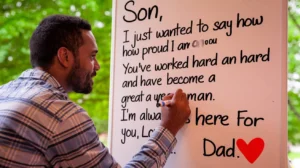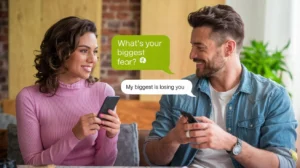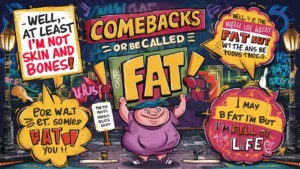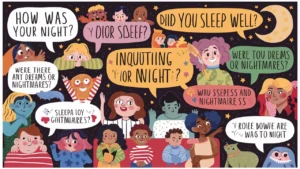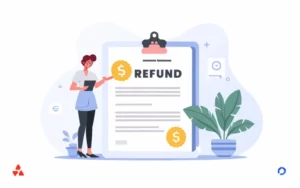When someone says “I’m fine,” it can often be a polite or dismissive way of deflecting deeper conversations. Whether you’re trying to understand how someone truly feels or just looking for a way to navigate these brief exchanges, having a range of thoughtful responses can help.
Here are 28 creative ways to respond to “I’m fine” that can open up conversation and show genuine care.
1. “Are you sure? I’m here if you need to talk.”
This response shows genuine concern and offers support without pressing too hard. It communicates that you’re available for a deeper conversation if they’re ready.
Example:
Person A: I’m fine.
Person B: Are you sure? I’m here if you need to talk.
2. “It sounds like there might be more to it. Want to share?”
This reply acknowledges that “fine” might be a cover for something else and gently encourages them to open up.
Example:
Person A: I’m fine.
Person B: It sounds like there might be more to it. Want to share?
3. “Sometimes ‘fine’ means a lot more. How are you really?”
This response highlights that “fine” can be a complex emotion and invites them to be more honest about their feelings.
Example:
Person A: I’m fine.
Person B: Sometimes ‘fine’ means a lot more. How are you really?
4. “I’m glad you’re okay. Anything you want to talk about?”
This reply expresses relief that they’re doing okay but leaves the door open for further conversation.
Example:
Person A: I’m fine.
Person B: I’m glad you’re okay. Anything you want to talk about?
5. “You don’t have to be ‘fine’ with me. What’s going on?”
This response assures them that they don’t need to put on a brave face with you and encourages them to share their true feelings.
Example:
Person A: I’m fine.
Person B: You don’t have to be ‘fine’ with me. What’s going on?
6. “I’m here for you if you need to vent. What’s on your mind?”
This reply offers a listening ear and shows that you’re available to help them work through whatever they’re experiencing.
Example:
Person A: I’m fine.
Person B: I’m here for you if you need to vent. What’s on your mind?
7. “It’s okay if you’re not fine. Let’s talk about it.”
This response normalizes not being fine and encourages open dialogue, making it clear that it’s okay to express feelings.
Example:
Person A: I’m fine.
Person B: It’s okay if you’re not fine. Let’s talk about it.
8. “I get the feeling there’s more to this. Want to discuss it?”
This reply suggests that you sense there’s more beneath the surface and invites them to share.
Example:
Person A: I’m fine.
Person B: I get the feeling there’s more to this. Want to discuss it?
9. “If you’re not feeling up to talking, that’s okay too. Just know I’m here.”
This response respects their space while reassuring them of your support, letting them know they can reach out whenever they’re ready.
Example:
Person A: I’m fine.
Person B: If you’re not feeling up to talking, that’s okay too. Just know I’m here.
10. “Sometimes it helps to talk, even if you’re just feeling ‘fine.’”
This response suggests that even a minor conversation might be beneficial and encourages them to open up.
Example:
Person A: I’m fine.
Person B: Sometimes it helps to talk, even if you’re just feeling ‘fine.’
11. “I know you’re fine, but how about we grab a coffee and chat?”
This response suggests a casual setting for conversation, which might make them more comfortable sharing.
Example:
Person A: I’m fine.
Person B: I know you’re fine, but how about we grab a coffee and chat?
12. “I understand you’re fine, but I’m here if you need anything.”
This response acknowledges their current state while offering help, showing that you’re willing to support them in any way they need.
Example:
Person A: I’m fine.
Person B: I understand you’re fine, but I’m here if you need anything.
13. “Sometimes ‘fine’ isn’t really fine. Can we talk?”
This response suggests that “fine” might not be the full picture and gently encourages a deeper conversation.
Example:
Person A: I’m fine.
Person B: Sometimes ‘fine’ isn’t really fine. Can we talk?
14. “I’m here for you. Let’s make sure everything’s really okay.”
This response shows that you’re ready to provide support and ensure that they’re genuinely okay.
Example:
Person A: I’m fine.
Person B: I’m here for you. Let’s make sure everything’s really okay.
15. “Your ‘fine’ might be hiding something. Do you want to talk about it?”
This response points out that “fine” could be masking deeper feelings and invites them to share.
Example:
Person A: I’m fine.
Person B: Your ‘fine’ might be hiding something. Do you want to talk about it?
16. “I appreciate you saying you’re fine. What’s been going on?”
This reply acknowledges their response while gently probing for more information about their situation.
Example:
Person A: I’m fine.
Person B: I appreciate you saying you’re fine. What’s been going on?
17. “If you’re feeling more than ‘fine,’ I’m ready to listen.”
This response opens the door for them to express more complex emotions and shows that you’re ready to support them.
Example:
Person A: I’m fine.
Person B: If you’re feeling more than ‘fine,’ I’m ready to listen.
18. “It’s okay not to be fine. Let’s talk about what’s up.”
This response normalizes not feeling fine and encourages them to share their thoughts or feelings.
Example:
Person A: I’m fine.
Person B: It’s okay not to be fine. Let’s talk about what’s up.
19. “I hear you. If there’s anything you want to share, I’m here.”
This reply acknowledges their state and reassures them that you’re available if they decide to open up.
Example:
Person A: I’m fine.
Person B: I hear you. If there’s anything you want to share, I’m here.
20. “Thanks for letting me know. Do you want to talk about how you’re feeling?”
This response shows appreciation for their response and gently invites a deeper conversation.
Example:
Person A: I’m fine.
Person B: Thanks for letting me know. Do you want to talk about how you’re feeling?
21. “It’s okay if you’re not fine. I’m here to listen whenever you’re ready.”
This response respects their current state while offering support and making it clear that you’re available when they’re ready to talk.
Example:
Person A: I’m fine.
Person B: It’s okay if you’re not fine. I’m here to listen whenever you’re ready.
22. “I understand you’re fine, but I sense there might be more. Want to share?”
This response acknowledges their statement while gently probing for more details, indicating that you’re sensing they might need to talk.
Example:
Person A: I’m fine.
Person B: I understand you’re fine, but I sense there might be more. Want to share?
23. “Sometimes a quick chat can make a big difference. Interested?”
This response suggests that even a brief conversation might help and invites them to engage in a discussion.
Example:
Person A: I’m fine.
Person B: Sometimes a quick chat can make a big difference. Interested?
24. “I’m glad you’re doing okay. Do you want to talk more about it?”
This response shows appreciation for their well-being and encourages them to open up if they feel like it.
Example:
Person A: I’m fine.
Person B: I’m glad you’re doing okay. Do you want to talk more about it?
25. “I’m here for you, no matter how you’re feeling. Want to talk?”
This response assures them that you’re available for any conversation, regardless of their current feelings.
Example:
Person A: I’m fine.
Person B: I’m here for you, no matter how you’re feeling. Want to talk?
26. “Thanks for letting me know. How’s everything really going?”
This reply acknowledges their response and encourages them to share more about their situation.
Example:
Person A: I’m fine.
Person B: Thanks for letting me know. How’s everything really going?
27. “I get the feeling there’s more behind ‘fine.’ Want to talk about it?”
This response suggests that you sense there might be deeper feelings and invites them to share.
Example:
Person A: I’m fine.
Person B: I get the feeling there’s more behind ‘fine.’ Want to talk about it?
28. “It’s okay if you’re not up for talking. Just remember I’m here.”
This response respects their space while reminding them of your support.
Example:
Person A: I’m fine.
Person B: It’s okay if you’re not up for talking. Just remember I’m here.

Justin Taylor is the innovative force behind ReplySwift.com. With a knack for creating quick, witty, and effective responses, Justin empowers others to communicate more confidently. On ReplySwift.com, he offers expert tips, customizable templates, and valuable insights to enhance your reply game.


